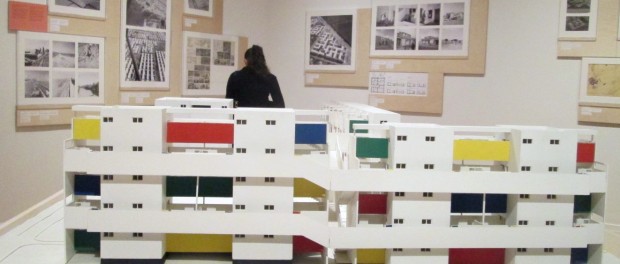A Tale of Two Cities and their Colonial Patrons
Check this title: How architects, experts, politicians, international agencies and citizens negotiate modern planning: Casablanca Chandigarh. I agree — the CCA’s latest exhibit sounds like a stuffy paper topic at a conference intended for academics specializing in IR and Poli Sci. Leave that aside. However dry its title, Casablanca Chandigarh is an accessible exhibit with a clear focus and a back catalogue of archival material that would make any bibliophile or architect swoon.
Casablanca, Morocco and Chandigarh in the Punjabi region of India benefited from international assistance in the 1950s, Casablanca from the French and Chandigarh from the UN. No one likes to say no to help, of course. Around this time period, though, poorer countries were sloughing off intrusive, patronizing help provided by richer nations and their well-meaning organizations. Rather than passively accepting the help offered and any strings attached, Casablanca and Chandigarh worked together with the “colonial” powers to create new visions for their cities. The resulting architectural and urban planning projects are hybrids of local culture and international desires. Technical know-how, planning skills, and of course cold hard cash came from foreigners. But, in the end, each city put its own stamp of self-definition on the projects.
For Casablanca, the exhibit focuses on the expansion of the city under the auspices of Michel Échohard. In order to deal with increased migration from the countryside to the city and the unpredictability of urban development, he created a Housing grid that could be adapted to different areas. Essentially it created low-cost, low-rise buildings. In Chandigarh, Le Corbusier, Pierre Jeanneret, Maxwell Fry and Jane Drew, along with local architects and planners worked together to create a new capital of East Punjab. A rural setting was transformed into a city by creating a street grid with districts. However, not everything was urbanized; several villages were preserved in the process.
Like most CCA exhibits, this one has its fair share of maquettes and some colourful infographics. Over 400 objects are on display, along with maps, books and pamphlets from the well-meaning organizations. Among the most interesting are candy coloured pamphlets published by the UN about teaching locals how to deal with matters of hygiene as well as stat-heavy reports on population changes. The wall text explaining each room is not very jargon-heavy and provided the much-needed information to illuminate each room’s contents.
Curators Tom Avermaete and Maristella Casciato do a fantastic job amassing excellent archival information. A large section comes from the CCA’s own Pierre Jeanneret archive. Beautiful commissioned photographs by Yto Barrada and Takeshi Homma bookend the walls, giving contemporary portraits of these two cities.
Exhibit at the CCA (1920 Baille) from Nov 26,2013-April 20, 2014. Museum open 11-6 W-Sun, 11-9 Thursdays. $10/$7 (free admission after 5:30 pm on Thursdays)
1 Trackbacks & Pingbacks
Comments are closed.










